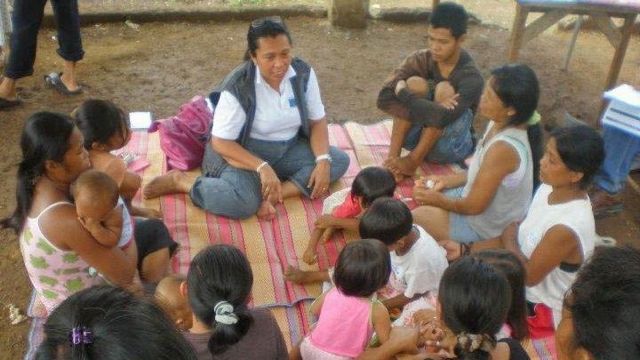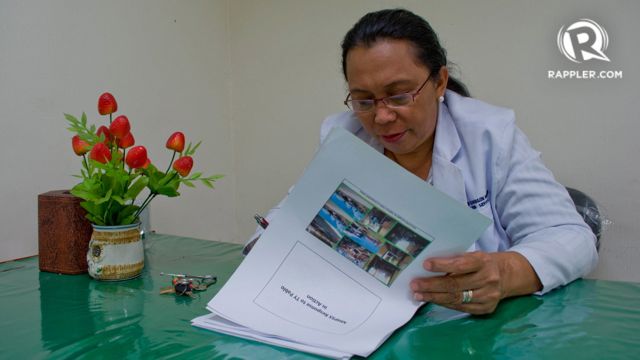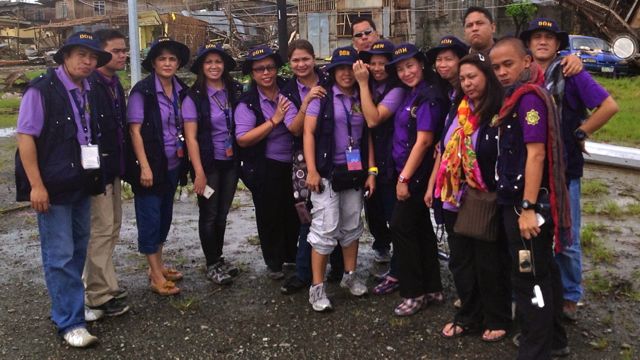SUMMARY
This is AI generated summarization, which may have errors. For context, always refer to the full article.

MANILA, Philippines – In July 1990, an earthquake struck Central and Northern Luzon, killing hundreds and destroying thousands of homes. Out of the disaster management teams sent out to help survivors, one stood out: a mental health task force.
Dr Lourdes Ignacio recalls the welcome they got when people first learned of who they were and what they do: they were turned away.
“There are no mental patients here. We do not need you,” she recalls them saying.
Residents did not want to talk to them for fear of being branded insane. We need food and clothing, they said, not psychiatrists.
But as the country weathered disaster after disaster, doctors now try to stress the importance of addressing survivors’ psychological and emotional wellbeing.
Just last December 2012, Typhoon Pablo battered Mindanao, killing more than a thousand and affecting millions. People in hard-hit areas like Compostela Valley and Davao Oriental spent Christmas Day in destroyed houses and greeted the New Year with uncertainty.
Survivors in these situations don’t just need material aid. After a long day of finding food and struggling to rebuild their lives, sometimes all they need is to express what they feel, and to find a willing ear on the other end of the line.
Fear and grief
The initial unwelcome greeting to mental health workers reflects the stigma associated with the profession. For most, the word “mental” is synonymous with the insane and the violent.
But Ignacio says psychiatrists are not just concerned with the clinical diagnosis of mental disorders.
In an article in the World Psychiatry Journal, Prof Mario Maj from the University of Naples says psychiatrists are now called to deal with “mental health problems,” citing as an example the serious psychological distress in people suffering after a natural disaster.
Ignacio clarifies that suffering from a sense of fear, grief and hopelessness does not automatically equate to having a mental disorder. These, she says, are normal reactions to an abnormal event. A diagnosis is made when these symptoms interfere with a person’s daily life activities over an extended period of time.
Art of listening
In her 23 years working in disaster response efforts, nurse Thelma Barrera has witnessed the slow but growing acceptance of their work among the people they serve.
Barrera is program director of the Mental Health and Psychosocial Support Services (MHPSS) Program of the National Center for Mental Health. She and her team have been providing psychosocial services to survivors of man-made and natural disasters over the past two decades. The response then had been the same: they wanted food, not people to talk to.

She knew they finally reached a turning point in 2011 when a fire broke out in Navotas, affecting at least a hundred households.
Barrera recounts how a woman came running to them as the team made its way to the area.
“She asked, ‘Psychosocial kayo? Psychosocial? Hay salamat, psychosocial!’” Barrera says. “She was so glad to see us. The woman just started talking to us nonstop.”
For nearly 10 minutes, the woman recounted her experience in the aftermath of the fire, as Barrera simply stood there listening. “Parang gumaan ang pakiramdam ko, salamat,” Barrera recalls her saying. “Maraming nagbibigay ng pagkain, pero walang nakikinig.”
From victims to survivors
How a disaster affects people is dependent on several factors, such as the duration and nature of the disaster, the specific experiences the victim lived through, and the immediate availability of social support.
What Ignacio, Barrera and their psychosocial teams do in disaster areas is called psychosocial services. The term has been used to refer to debriefing sessions, but they stress that psychosocial support is more than simply talking to survivors and allowing them to tell their stories.
Psychosocial support addresses a person’s emotional, social, mental and spiritual needs for his psychological and emotional wellbeing. To do this, both the survivors, affected community, and local government units must get involved.
Ignacio thinks this is a more empowering way to look at survivors: by focusing more on their inherent resilience and capacity to recover, rather than focusing on the trauma and stress they are feeling.
“Disaster situations are experiences of a community of people affecting each other,” she says. “For the individual to recover from a disaster, he needs a social support system – a community, good governance, economic help. But a community must also have healthy functioning individuals who will work actively to recover.”
Hidden victims
Having trained facilitators is important in processing sessions. Barrera says it’s not easy to do the kind of work they do, even when all it seems to be is a matter of listening.
“Empathy is a skill,” she explains. “You put yourself in someone else’s shoes, without forgetting you are not in that shoe.”
Not everyone is cut out for that kind of work, not when people are dazed, helpless and weeping. As social workers, Barrera says they are not supposed to cry with them. “Because then it becomes about you,” Barrera says. “It should always be about the survivors.”
But even with training and hours in the field, the gravity of what they do can still overwhelm disaster responders. Barrera recalls one session she had with children in the aftermath of the Maguindanao massacre. In 2009, 58 people were killed – most of them journalists – in the worst election-related violence in Philippine history.
Barrera asked the children to draw and write as a way of expressing their feelings. When she asked them to share their work to the group, a 14-year-old girl volunteered to share her poem – but instead of reading it, she sang.
“She sang so well, and she was crying while she did,” Barrera recalls. “The song was in Maranao. When I asked her to explain in Tagalog what it was about, she said it was for her mother. It was her way of telling her mother how much she loved and missed her.”
Barrera says it’s not just survivors who need psychosocial processing – even relief workers are indirect victims too. They are called hidden victims: responders and people who are subjected to the disaster’s effects on the community.
“We talk to soldiers, local government officials, even people from the media,” Barerra says. “They sometimes cannot cope with the stress of seeing so many people affected, and yet they cannot do anything.”

Support strategies
Acceptance of psychosocial components in disaster response has improved much since 1990, but Barrera and Ignacio think there’s room for improvement in how the concepts are applied and understood.
These services don’t just need trained facilitators and backing from the government. Strategies to help survivors deal with the disaster and rebuild their lives also need to be relevant to their needs. Ignacio thinks this is what most disaster operations sorely lack.
“Think about the human lives. What do survivors feel? They don’t just need food, clothing, houses,” she says. “Kailangan ng pagpapakatao.” (There is a need for humaneness.) – Rappler.com
Add a comment
How does this make you feel?
There are no comments yet. Add your comment to start the conversation.